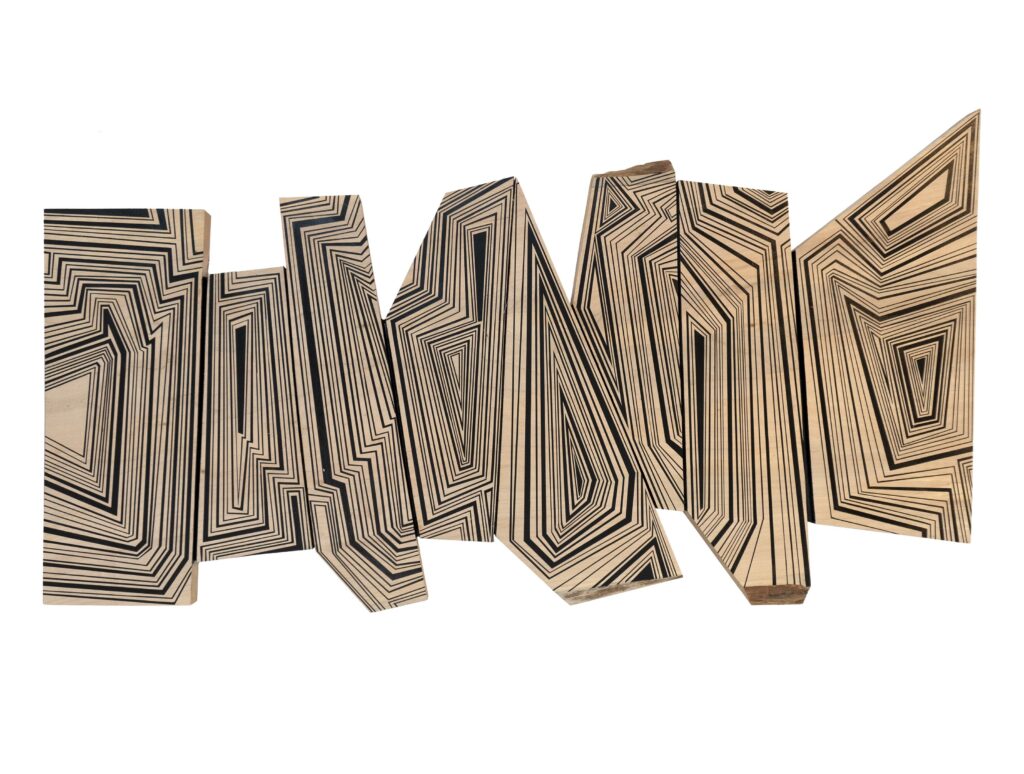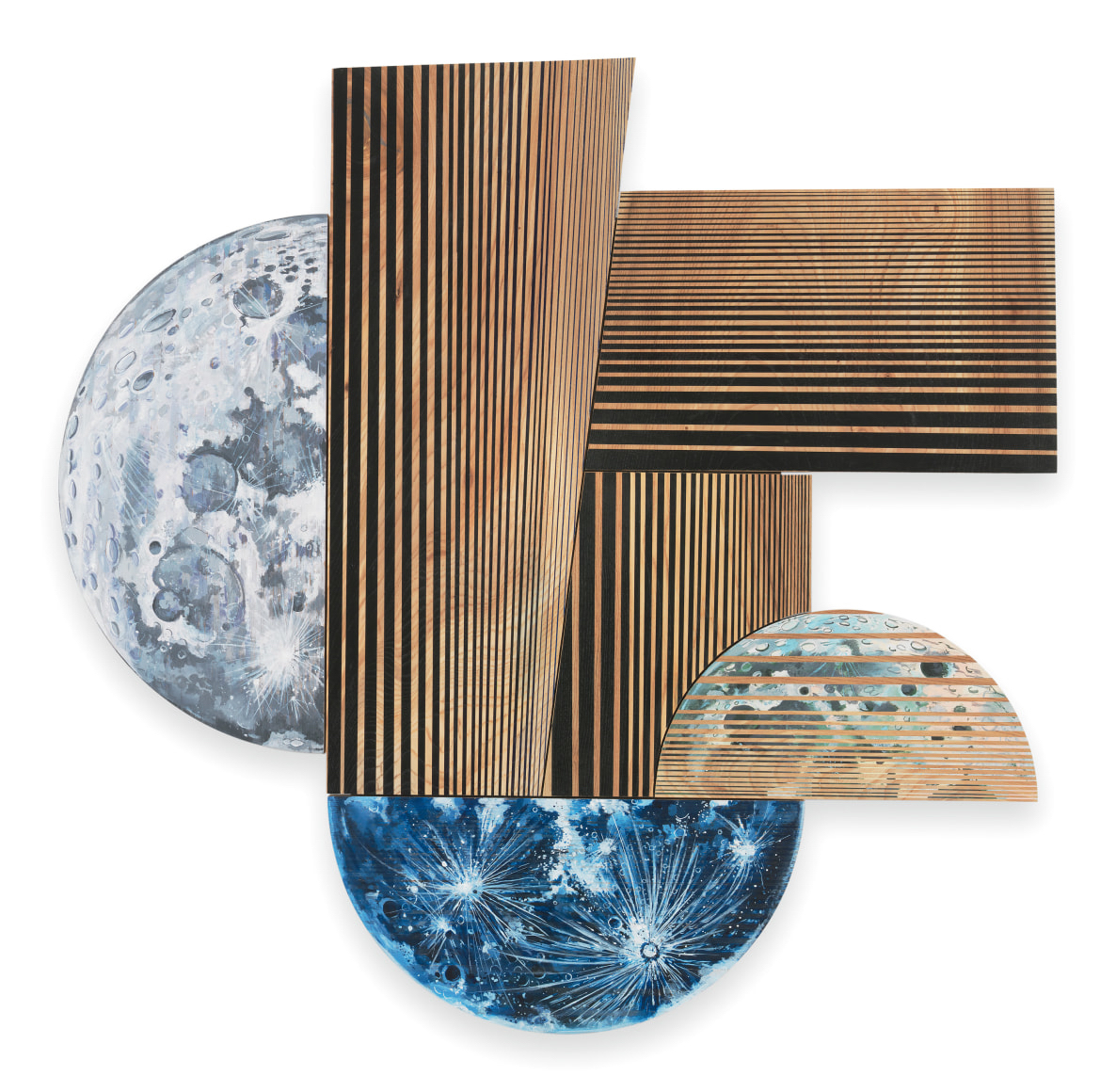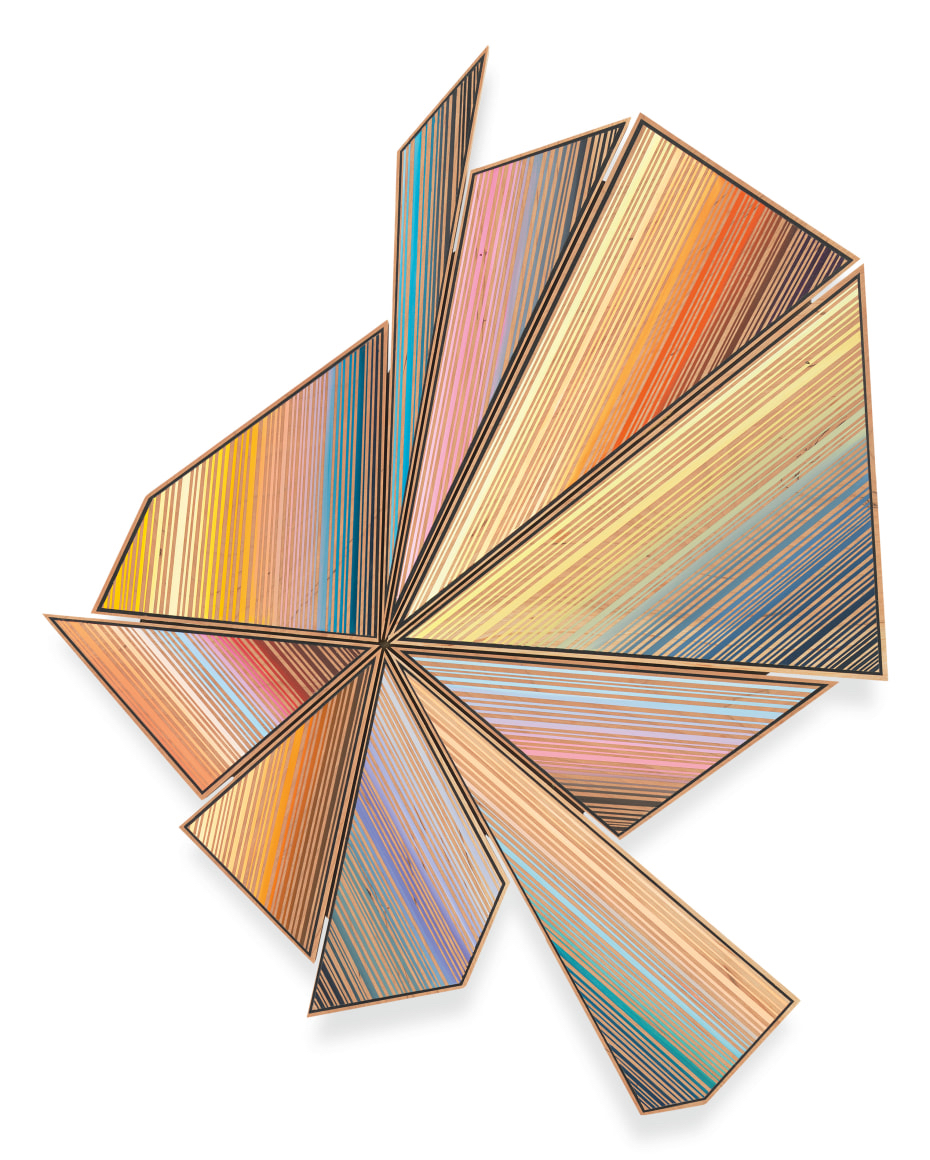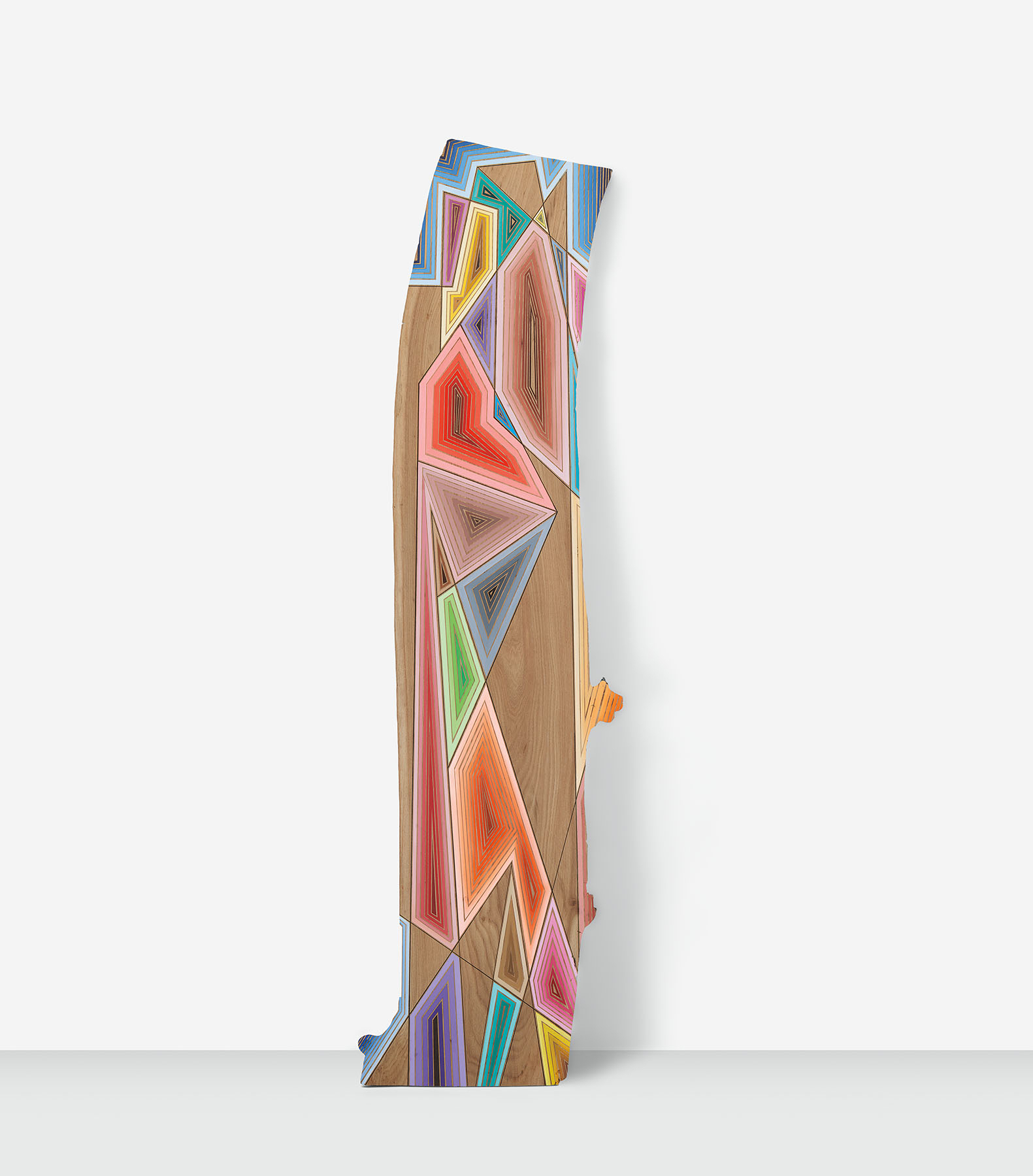
Painter Jason Middlebrook grew up amid the redwood forests near Big Sur, California, but it wasn’t until 20 years ago, when he moved to the Hudson River Valley, that he began to look anew at forests. “I discovered all these hardwoods—indigenous New England wood, like walnut, ash, birch, oak,” he says. After visiting a sawmill in Western Massachusetts, he started to consider burls (trunk appendages that are often discarded after a tree is cut down for lumber) as potential substrates for his paintings. To Middlebrook, the burls represent “the notion of compressed time, because the wood is basically time, you know?” Some of them come from trees 50 to 60 years old—not quite “the old growth lumber that’s from 200 years ago,” he admits, “but each one still has a story.”
Middlebrook takes pride in his meticulous process. After letting the slabs hang in his studio for a few days so that he can study and memorize their patterns, he covers them with tape and begins to sketch his designs in Sharpie, inspired by the woodgrains underneath. He then cut out parts of the taped design, leaving space for him to paint. Once his work is dry, Middlebrook removes the tape to reveal the completed design. The geometric paintings are “sometimes inspired by geology and depth; sometimes there’s painters’ influence, like Agnes Martin and Ellsworth Kelly,” he says. He hopes each piece invites the viewer to reflect upon not only the craftsmanship involved in the painting, but also the “magic component. I want people to stop and think about the beauty of the world and what it took for that tree to grow.”




